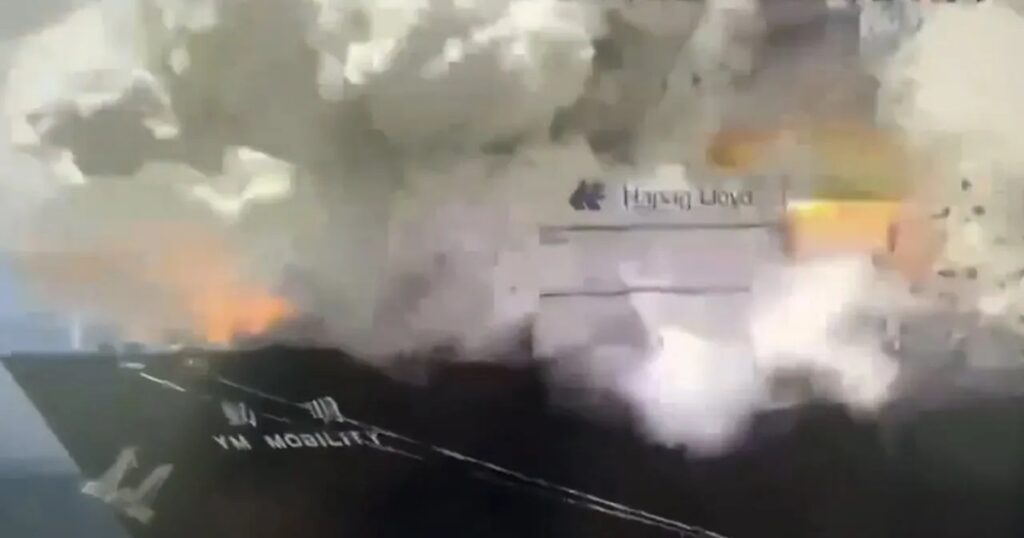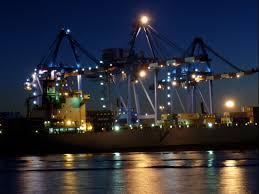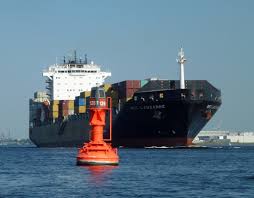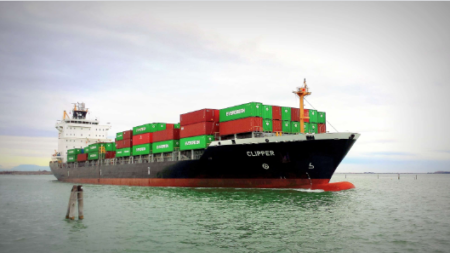19,000 teu Marie Maersk burns in the Atlantic; the crew is safe as the fire reignites concerns over hazardous cargo handling.

A major maritime emergency is unfolding in the Atlantic Ocean as the 19,000 TEU Marie Maersk, one of the largest container vessels in the world, battles a serious fire while sailing off the coast of Liberia. The ship, operated by Maersk and deployed on its Gemini alliance service with Hapag-Lloyd, reported the incident earlier this week.
According to official statements, all crew members are safe, and the vessel’s propulsion, steering, and navigation systems remain intact, ensuring it can be manoeuvred. Two firefighting tugs have reached the scene and are actively assisting with containment efforts. The ship has diverted towards the West African coast for support. However, the extent of the cargo damage remains unknown at this stage.
This incident adds to the long list of high-profile container ship fires that continue to disrupt global trade, putting lives, cargo, and the environment at severe risk. The timing is particularly significant, as it coincides with the release of the official investigation into last year’s catastrophic fire on the YM Mobility.
The YM Mobility report traced the disaster to a misdeclared hazardous cargo, a chemical called tert-butyl peroxybenzoate (TBPB). The dangerous goods were packed inside a reefer container that was left unplugged in extreme heat exceeding 40°C at Ningbo-Zhoushan port. Without refrigeration, the chemical self-decomposed, sparking a violent explosion that destroyed the vessel’s bow and caused an estimated RMB 90 million ($12.5 million) in damages.
The pattern is disturbingly familiar. Earlier this year, the Wan Hai 503 caught fire, resulting in the tragic loss of four crew members and serious injuries to six others. The vessel remains stranded as ports refuse entry, highlighting the reluctance of authorities to take on hazardous rescue operations. Similarly, in 2021, the X-Press Pearl sank off Colombo after a nitric acid leak spiralled into a massive fire. That accident not only destroyed the vessel but also triggered an ecological disaster, spilling plastic nurdles into the ocean and devastating local fishing communities and tourism.
For Maersk, the Marie Maersk fire revives painful memories of the Maersk Honam tragedy in 2018, when a cargo blaze killed five crew members. The vessel was partially rebuilt and renamed the Maersk Halifax, but the scars of that disaster remain a stark reminder of the dangers lurking in containerised trade.
Maritime safety experts point to a recurring root cause: misdeclared, undeclared, or improperly handled dangerous goods. In many cases, shippers intentionally disguise hazardous cargo to avoid higher freight charges or regulatory scrutiny. This practice not only endangers crews but also threatens ports, insurers, and the global supply chain.
The latest blaze on the Marie Maersk is therefore not just another isolated incident; it’s a wake-up call. As vessels grow in size and the variety of cargoes expands, the risks escalate. Insurers, ports, and shipping lines are now under renewed pressure to tighten monitoring, enforce stricter cargo declaration rules, and adopt advanced fire detection and suppression systems.
For now, the firefighting effort continues in the Atlantic, with the crew holding strong against the flames. But across the logistics and maritime world, one troubling question remains: how many more fires will it take before hazardous cargo risks are addressed with the urgency they demand?
Source: Seatrade Maritime news











